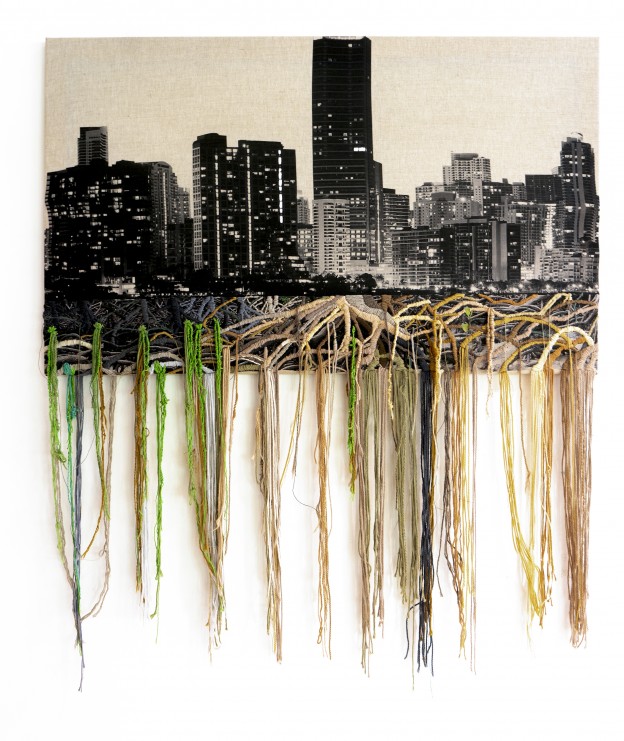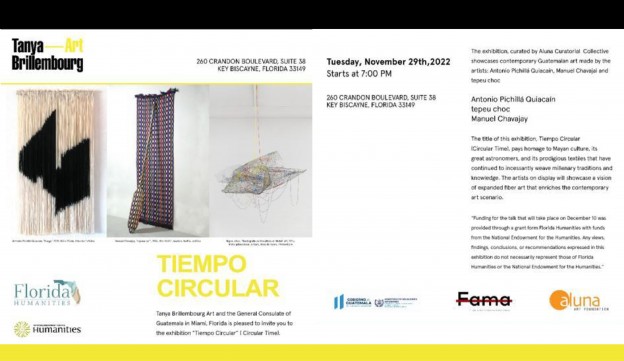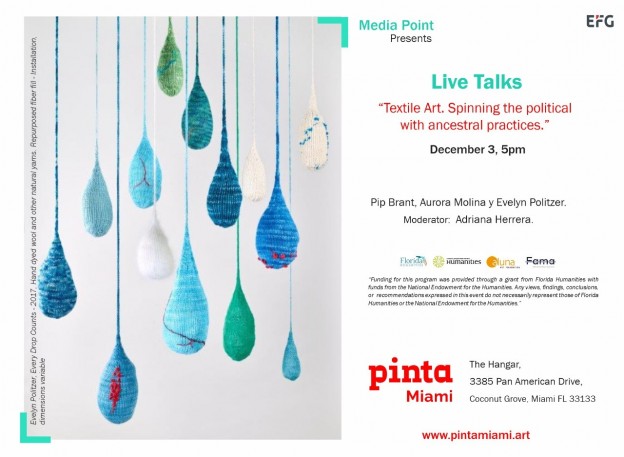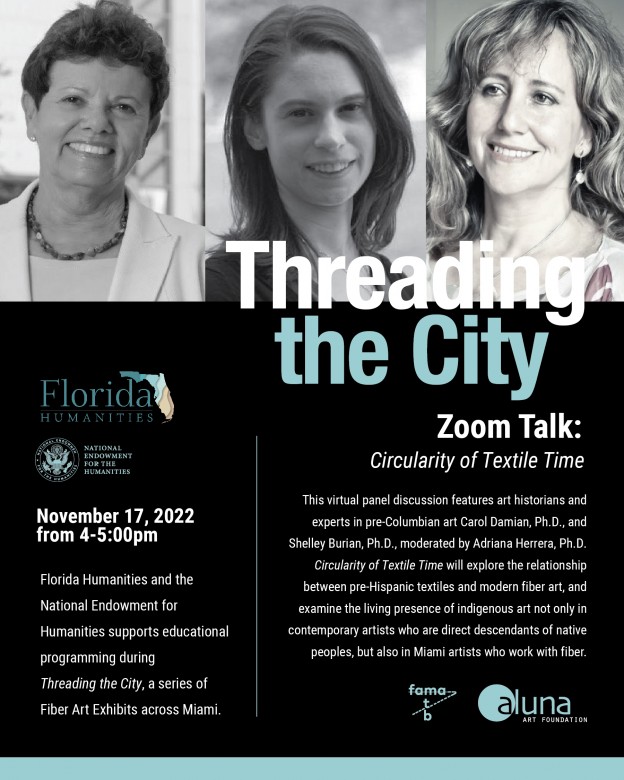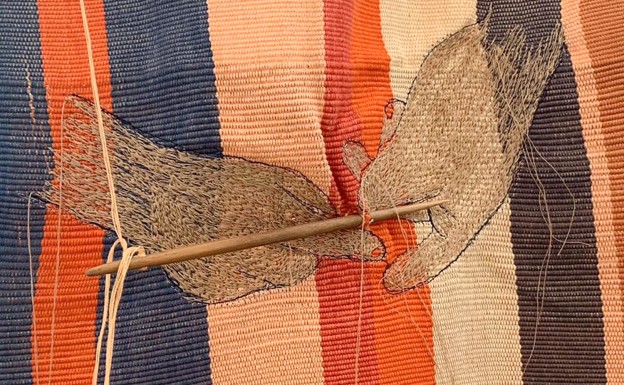PAST EXHIBITION
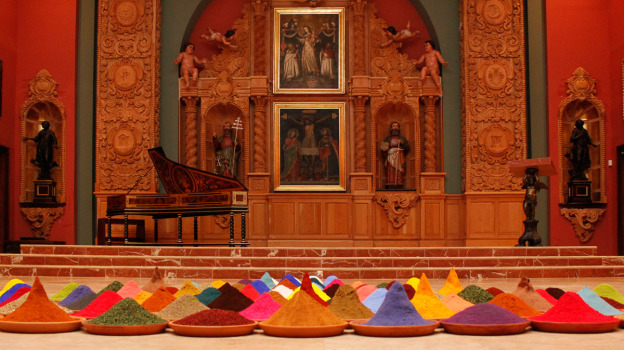
“Spiritual Fields”
Aluna Art Foundation will be presenting the work of three Latin-American contemporary artists (Sonia Falcone, Orlando Alandia, Cesar Rey and Raymundo Travieso) at the Colonial Florida Cultural and Convention Center (Art Museum and Catholic Church) during Art Basel Week 2014.
This particular church located at 3220 NW 7th Ave, Miami, houses an important collection of Latin American Art from the colonial period (the most extensive in the United States), with paintings and sculptures of the XV, XVI and XVII Century from Bolivia, Peru and Mexico among other countries.
Church-Museum of Nuestra Señora de la Merced | Corpus Christie Parrish.
Opening Recption: December 4th, 7:30 p.m
3220 NW 7th Ave, Miami, FL 33127 | (305) 635-1331
Aluna Curatorial Collective presents “SPIRITUAL FIELDS”: A Unique Dialogue Between Colonial Paintings and Contemporary Explorations of Transcendence
The exhibition Campos espirituales (Spiritual Fields) curated by the Aluna Curatorial Collective (Adriana Herrera and Willy Castellanos) at the Iglesia-Museo de Nuestra Señora de la Merced, is a diachronic proposal that addresses the time for spirituality as a dialogue with the transcendent that runs across the centuries and the demarcations between artistic styles. Starting out precisely from the original meaning of the word “religion”, derived from the Latin “re” and “ligare”, “join together again”, it gathers together the original colonial paintings that this church preserves as a treasure, and shows them alongside contemporary installations and artworks that approach from diverse perspectives the union between the human being and the divine, and of different peoples around the world between themselves.
The opening of this exhibition will take place next December 4 in the Chapel-museum that hosts the most outstanding collection of religious art from that period in Florida, and that constitutes the first phase of the project Colonial Heritage of Florida, in the campus of the Catholic church of Corpus Christie, located between the areas of Allappatha and the Wynwood art district in Miami.
The pieces of 17th-century Hispanic-American colonial art include an oil depicting Saint Joseph with the Child Jesus that belongs to the School of Cuzco; a painting of The Pietà, executed in that same century by an anonymous artist from Alto Peru; a sculpture of Christ in agony carved in wood in Nueva Granada; and a Christ of the Tremors executed in Cuzco. Campos espirituales thus establishes a dialogue between those colonial works and contemporary ones addressing spirituality from different perspectives.
In an atmosphere of sacred architecture, with walls covered in carved cedar and openings with frames covered in gold leaf, the colonial paintings hold a dialogue with the installation Campos de color, created by the Bolivian artist Sonia Falcone, who represented her country with this work in the past edition of the Venice Biennale, as well as with a group of cosmic paintings executed with different kinds of earth by her compatriot Orlando Alandia, and with the works of the Cuban artist Raimundo Travieso and the Colombian artist César Rey, both living in Miami.
Falcone’s huge installation, Campos de color, is composed of 88 clay pots ̶ the number is a metaphor for infinity ̶ that contain geometric cones composed of colorful species and mineral salts. Falcone uses the exuberant fusion of aromas and colors as metonymy of the richness of the diverse cultures. The pots, overflowing with spicy chili, intensely yellow turmeric or red peppers, or with those spices that brought Columbus to America, such as cinnamon, nutmeg, clove, among others, give shape to a map in which no culture prevails over another. Thus her installation, situated in the central atrium of the church-museum, places us before an imaginary map that constitutes a call to celebrate the closeness between diverse elements, and brings the kitchen close to the museum and art close to life.
Vicuña textiles woven by the native Andean peoples during the colonial period are featured alongside tapestries by the Cuban artist Raimundo Travieso, who fuses the synthesis of forms discovered at the birth of abstraction with the echo of the iconographies of archetypal figures that form part of the symbolic memory of humanity, such as the cross or the sea. Also featured in the exhibition is a series of nine paintings by Orlando Alandia, which fuses informalism abstraction with symbolic allusions to his Andeans ancestor architecture and cosmic vision. Finally, a huge installation by the Colombian artist César Rey is hanging down from the center of the temple’s ceiling combines the transparency of its material with a stellar shape woven with metal threads. The sculpture has been built with disposable plastic materials and reveals the poetic possibilities of recycling.
The acquisition of works will contribute to the culmination of the process, which aspires, in its final phase, to constitute an architectonic complex that will address the spiritual space as a convergence of art, culture and ecology.
Aluna Art Foundation presenta la exposición Campos espirituales en la Iglesia-Museo del Perú: diálogo transversales entre arte colonial y contemporáneo
La exhibición Campos espirituales, curada por Aluna Curatorial Collective (Adriana Herrera y Willy Castellanos) en la Iglesia-Museo del Perú de Nuestra Señora de la Merced, es una propuesta diacrónica que aborda el tiempo de la espiritualidad como un diálogo con lo trascendente que atraviesa los siglos y las demarcaciones entre estilos de arte. Partiendo justamente del significado original de la palabra “religión” que viene del latín “re” y “ligare”, “volver a unir”, el espacio reúne las pinturas originales de arte colonial que atesora este iglesia junto con instalaciones y obras de arte contemporáneo que abordan de diversas maneras, la unión del ser humano con lo divino.
La inauguración de esta exhibición única en su género tendrá lugar el próximo 4 de diciembre en el interior de la capilla-museo que alberga la colección más notable de arte religioso de este periodo de la Florida y que constituye la primera fase del proyecto Colonial Heritage of Florida, en el Campus de la Iglesia católica Corpus Christie, situada entre las áreas de Allappatha y el distrito de las artes de Wynwood en Miami. La iglesia servirá como un lugar de conexión con lo sagrado y como escenario en el cual se presentarán conciertos de música barroca.
Entre las piezas de arte colonial hispanoamericano del siglo XVII se encuentran un óleo de San José con el Niño Jesús de la Escuela del Cuzco; una pintura de la Piedad, ejecutada en ese mismo siglo por un artista anónimo del Alto Perú; una escultura de Cristo en la agonía tallado en madera en la Nueva Granada; un Cristo de los Temblores ejecutado en Cuzco; y un óleo de la decimal estación de la Cruz proveniente de la actual Bolivia. Campos espirituales establece así un diálogo entre esas obras coloniales y trabajos contemporáneos que abordan la espiritualidad desde perspectivas diversas.
De este modo, en una atmósfera arquitectónica sagrada, de paredes revestidas de roble tallado y vanos recubiertos con hojilla de oro, las pinturas coloniales dialogan con la instalación Campos de color de la artista boliviana Sonia Falcone, quien representó a su país con esta pieza en la pasada Bienal de Venecia, así como con un grupo de pinturas ejecutadas con diversos tipos de tierras por su coterráneo Orlando Alandia, y con las obras del cubano Raimundo Travieso y el colombiano César Rey, ambos residentes en Miami.
La enorme instalación de Falcone, Campos de color, está constituida por 88 vasijas de barro –el número es metáfora de lo infinito- que contienen conos geométricos conformados por coloridas especias y sales minerales. Falcone usa la exuberante conjugación de aromas y colores como metonimia de todos los alimentos y de la riqueza de las civilizaciones en la tierra. Las vasijas rebosantes de chile picante, de cúrcuma de intenso amarillo, o de pimiento rojo, y aquellas especias que trajeron a Colón a América como canela, nuez moscada, clavo de olor, entre otras, conforman una cartografía en la que ninguna cultura prevalece sobre la otra. De este modo, su instalación, situada en el atrio central de la iglesia-museo nos sitúa ante un mapa imaginario que constituye una invocación al futuro, una llamada a la celebración del acercamiento entre lo diverso y acerca la cocina al museo y el arte a la vida creando un pasaje de conexión entre la tradición posminimalista y el milenario aprendizaje de la gastronomía del mundo.
Junto con vicuñas tejidas por los pueblos originarios andinos en la colonia, se presentan paralelamente tapices del artista cubano Raimundo Travieso, quien reúne la síntesis de las formas descubierta en el nacimiento de la abstracción, con el eco de las iconografías de figuras arquetípicas que forman parte de la memoria simbólica de la humanidad, como la cruz o el mar. Igualmente, se presenta una instalación del colombiano César Rey. Un enorme móvil descolgado del centro del techo del templo conjuga la transparencia del material con una forma estelar tejida con hilos metálicos. La escultura ha sido construida con materiales de plástico desechable y revela las posibilidades poéticas del reciclaje.
Las obras adquiridas beneficiarán la culminación del proyecto, que en su fase final aspira a constituir un complejo arquitectónico que abordará el espacio espiritual como una convergencia de arte cultura y ecología.
Dirección:
Evento de inauguración: 4 de diciembre/2014, 7:30 p.m.
Iglesia-Museo del Perú de Nuestra Señora de la Merced
3220 NW 7th Ave, Miami, FL 33127
Tel. (305) 635-1331



